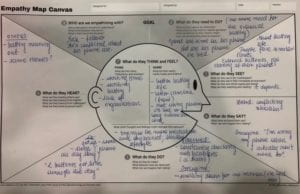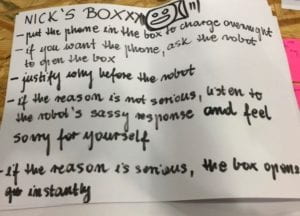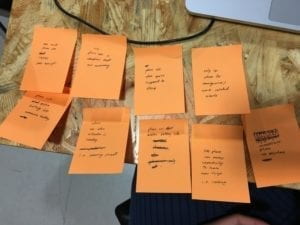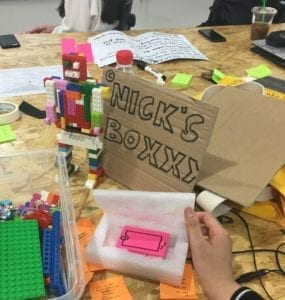With my group, we created a product for fellow Nick who was conflicted with his phone use, particularly when he is in bed, and with the battery life on his phone.



In the cycle, we first created an Empathy Map Canvas in order to understand our consumer. We then split individually to pinpoint opportunities and problems and then regrouped to find similar opportunities and problems we all had. Afterwards we brainstormed and came up with our prototype called “Nick’s Boxx” which attempted to tackle Nick’s problem. “Nick’s Boxx” is essentially an AI lie-detecting robot, inspired by his interest in hardware and robots, which talks Nick into doing what he wants to do and asks him why he wants to, that is being off his phone during unnecessary times, and keeps his phone within the designated charging box next to the robot. We decided this approach in design because we thought it would cater to his interests and be an engaging and disciplinary way to help him stay away from his phone. If it was a piece of software or a product that he had most control over, he could easily give into his temptations, but by creating a robot which inquiries his intentions, he is forced to create a valid reason why he needs to use his phone, which most of the time, there isn’t.

Doing the dirty design process was a fun experience, but ultimately it made me think about the way we approach designing products. A part of creating design is also attempting to understand the individual who will use it. For some people, one design may make more sense than another, and considering those different viewpoints in design makes the suitability of the product, to an extent, subjective. For Nick, we tried to reorient ourselves as if we were him, and crafted a product that catered to his needs and interest. The process also made me think about design that is made for the public and how we approach creating a product that makes sense to the target audience, and how this process can be used repeatedly to craft a polished product. If there is a design iterated so many times that it has become suitable for all, does that mean it’s still subjective or can it be considered objectively good? Or is something “good” inherently subjective / not objective?